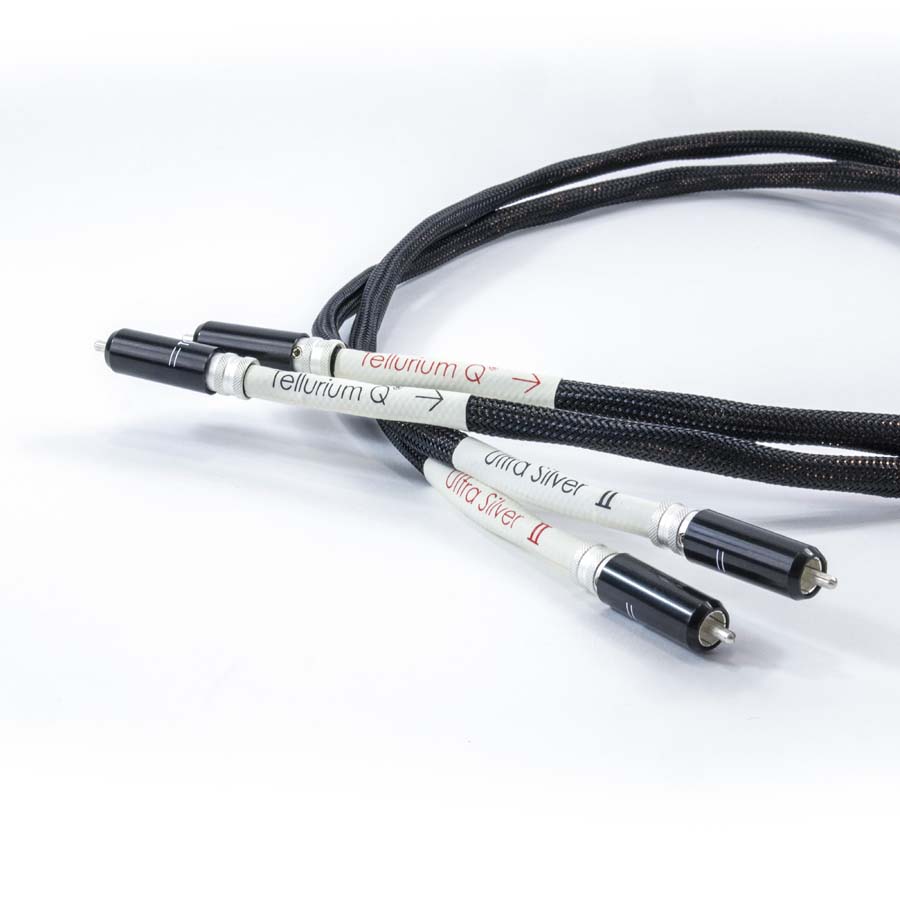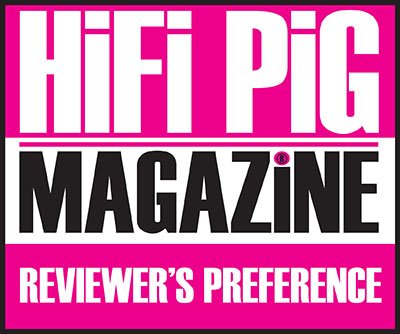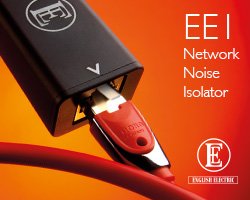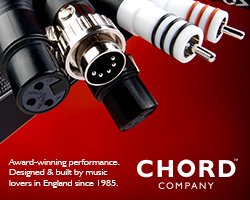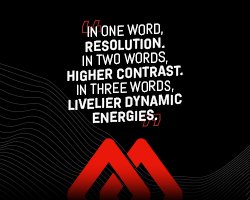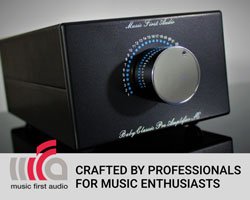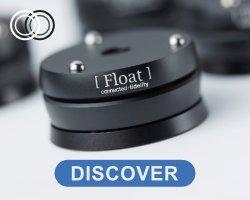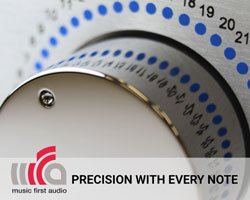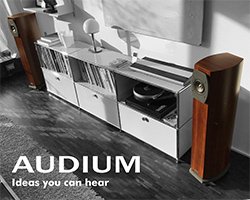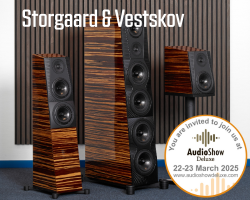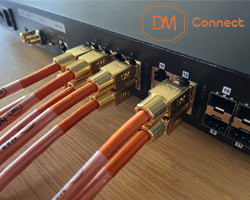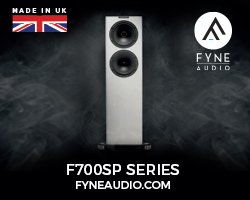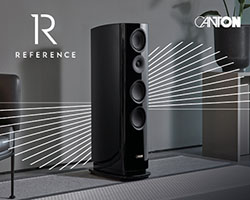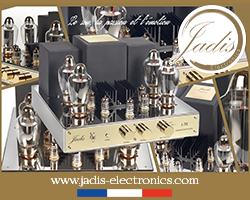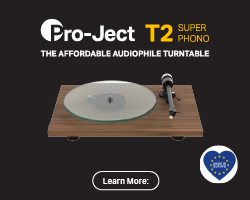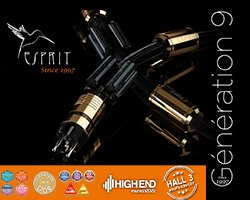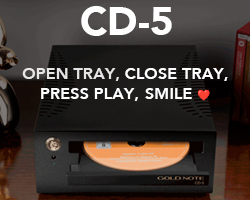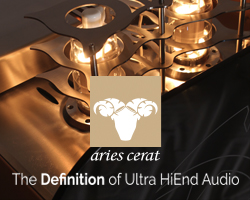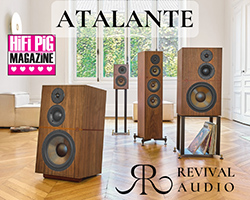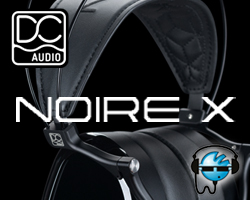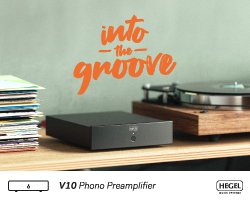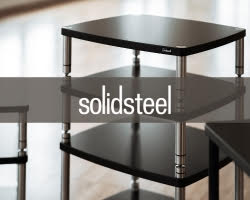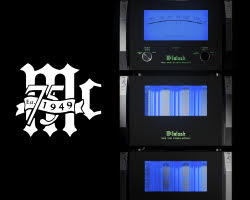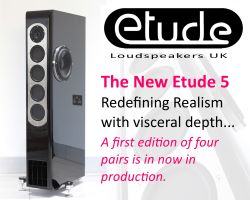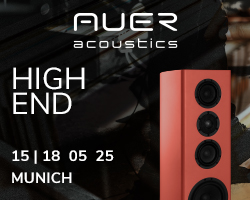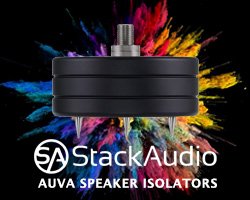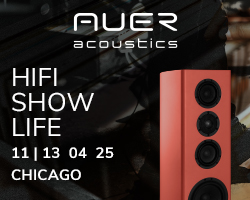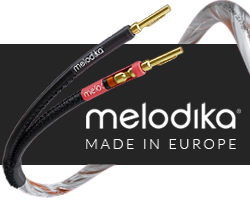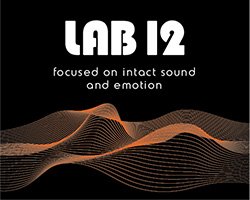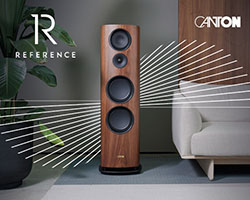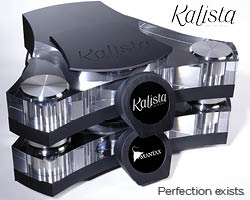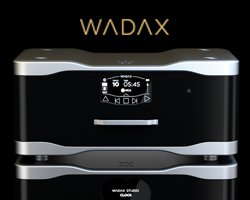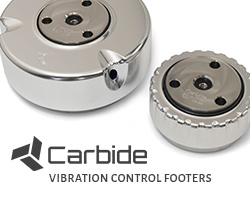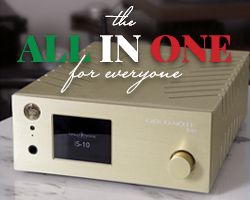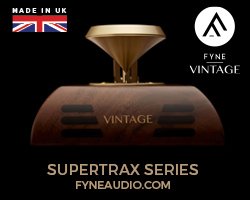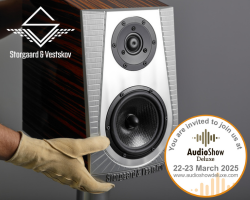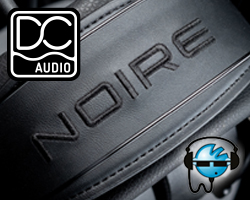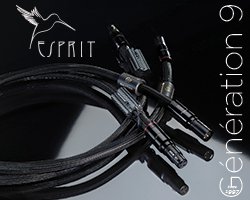TELLURIUM Q ULTRA SILVER MKII AUDIO CABLES
Tellurium Q Ultra Silver MKII is the latest design of the UK brand’s Ultra Silver series of cables. Janine Elliot checks out the interconnects and speaker cables from the range for HiFi PiG.
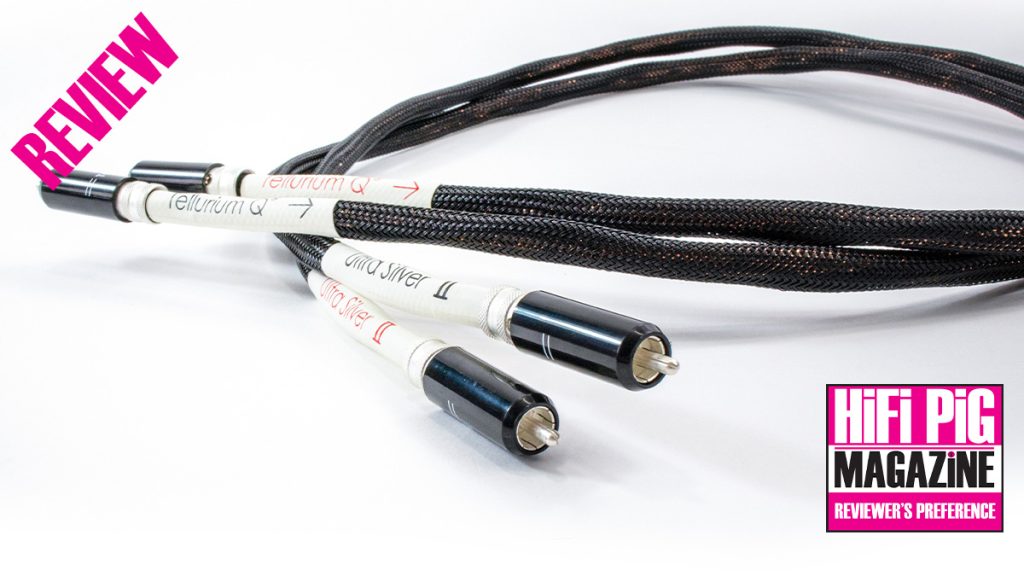
Tellurium Q has been developing and re-developing its cables for over 15 years. As soon as one cable is in the shops CEO Geoff Merrigan is thinking about how it could be improved even further. I have reviewed several of their cables in Mk l and Mk ll guises over the years and have always been impressed with what I hear – or rather don’t hear; more information on that later. The original Ultra Silver speaker cable was reviewed in HiFi Pig almost exactly 10 years ago and was loved for its pin-point precision and huge bandwidth. A decade later I have been sent the new speaker cable and 1m RCA interconnects to review complete with the Mk I versions to make a detailed comparison. Could the new Ultra Silver be any better than it was 10 years ago?
THE TELLURIUM Q FAMILY
Tellurium Q is constantly winning awards for its cables, even winning the Queen’s Award for Enterprise in 2021. Geoff has three basic families of cables in his portfolio; Blue, Black, and Silver. Each family is not necessarily better than the other, rather they fit into three different audio criteria laid out by TQ; the Blue family is warm and forgiving with a smooth and laid-back presentation. The Black range is smooth but fine-detailed and with lots of resolution. Music becomes a coherent organic whole with lots of realism and naturalness. The Silver family is uncoloured, transparent, unforced, vivid, and dynamic. In terms of performance profile, the families don’t necessarily go blue-black-silver. For example, while the Ultra Silver ll is a step up from the Ultra Black ll, higher up the chart is the Black Diamond and then the Silver Diamond. The new Ultra Silver is available as RCA, XLR, USB, tonearm RCA, digital XLR, digital RCA/BNC, LS, and bi-wire links. For this review, I was sent the loudspeaker cable at £583.75/m and RCA interconnect at £890.85/m pair (the XLR version is £1069/m pair)
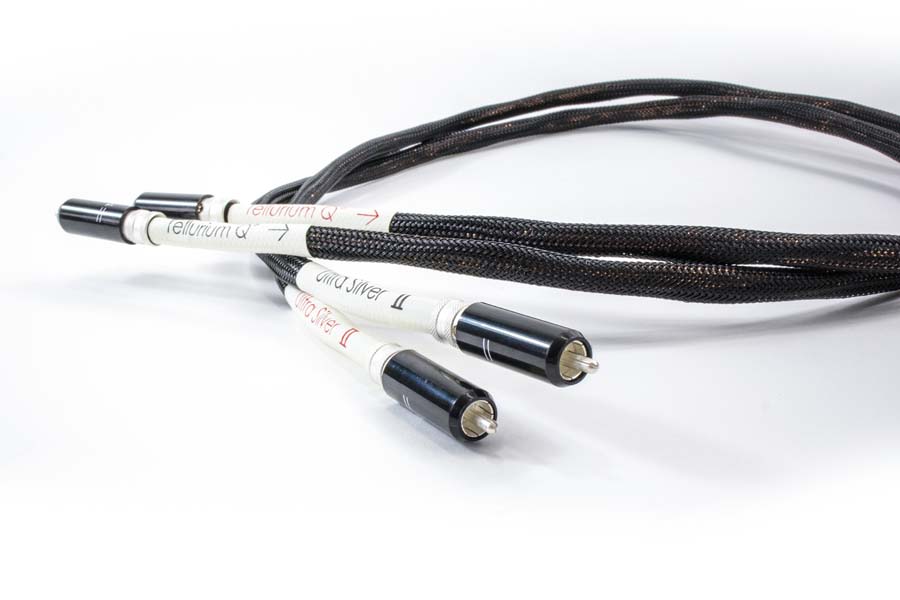
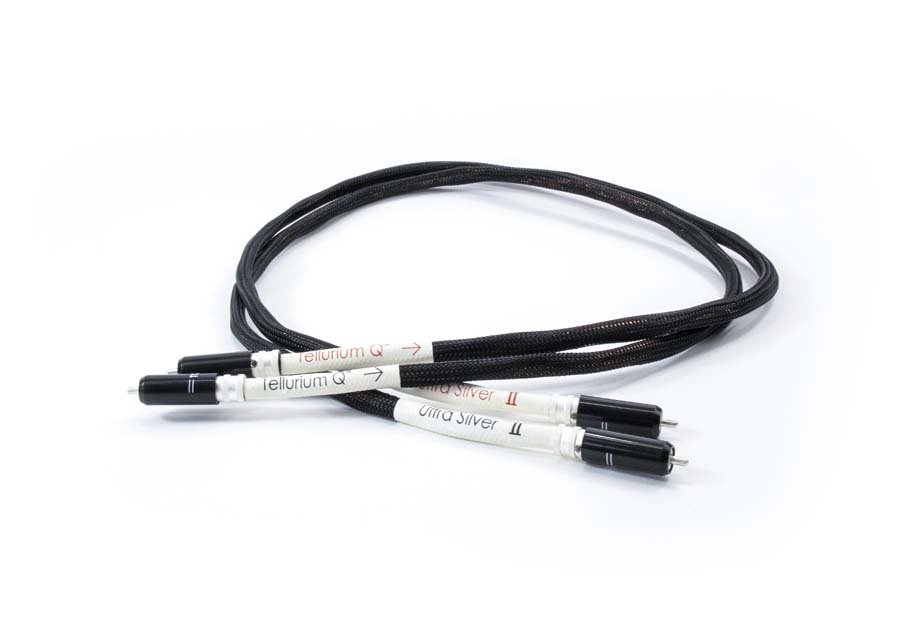
WHAT’S THE MAGIC?
Geoff is very guarded over what magic is actually inside his cables, believing it is more important how it sounds than knowing its chemical and physical structure. Luckily my razor blades are too blunt to cut them apart, and actually, I like the idea of not knowing what is inside as sometimes that can colour your evaluation; being a “Silver” product one could think it is all made from silver, which could make one think of a bright and harsh sounding cable, which it certainly is not. The only information Geoff could divulge was about the plugs, which do look like they are matt silver. He had tried using solid silver, but that just wasn’t good enough a sound, so he looked at specific thicknesses of plating with specific instructions as to what was in the plating bath.
“We went through quite a few iterations of plating to get that “recipe” right,” he told me. “There is more than one material plated onto the connector, pure silver is the outer layer.”
Of course, making the best cable means all the various components and chemical elements must work well together. This includes things like choice of solder and geometry of the conductor and dielectric. In order to make a good cable one needs to look at the sum of all the parts rather than point to just one element. Some manufacturers can get a little carried away with just aiming for 99.9999999 copper purity, for example. From all this, you can gather that Geoff is an ex-industrial chemistry student who trained in material science. His knowledge of the science of cable-making has always amazed and interested me.
TQ’s mantra is “Phase relationships in a signal is our focus”. Phase distortion in a sound is effectively a filter, altering the pure original sound source, pulling it out of focus. In a Bell Labs report from 1930 they found that transient phase distortion affected the ‘naturalness’ of voices so the sound wasn’t as clean and it contained extraneous audible sounds working in effect as an electronic filter. To get rid of phase distortion a lot of attention is therefore given to both electrical and mechanical parameters of the cable; the materials, construction, doping, and physical shape (for example, the Ultra Silver LS cable is a ribbon design, so the cores are distant from each other meaning lower inductance, though it’s not quite as simple as that!) The dielectric material is just as important as the cores and this also includes physical vibrational qualities. As mentioned, inductance as well as capacitance and resistance are going to affect the sound. When you also take into account that speaker resistance tends to increase with frequency, designing cables can be a complete minefield! In truth, a cable is a filter unless you can get all the numbers right. Reducing that colouration improves rhythmic insight, precision, and neutrality. For this review I really wanted to hear what I couldn’t hear, and in the review the cable’s accuracy and neutrality meant I actually heard new segments of the music that hadn’t been noticeable in other cables.
BUILD QUALITY
Tellurium Q cables are always expertly assembled, using the best components at their production facilities in Somerton, Somerset. The Ultra Silver ll is no exception. This is not only good looking, but easy to configure in my spaghetti of wires at the rear of the HiFi rack. The new loudspeaker cable is thicker than the original Ultra Silver, which meant it wasn’t quite so easy to bend around behind my rack. Even the lovely box it came in was considerably larger than the box it replaced! The increased thickness of the cable suggests the conductor and dielectric are significantly different to the original. This is a new product rather than an updated old product, though it is still sonically related to the original Ultra Silver. The RCA interconnect, however, does look a little closer to its predecessor, though a lot more “bendy”!
“The interconnect cable feels very different to the old version because it has been developed/designed from first principles with what we have learnt in the last few years of R&D. It is a very different cable to the old design and the main challenge was to keep it in the same Ultra Silver sonic family.”
“I think that the first time we dabbled with the Ultra Silver [Mk ll] development was nearly 7 years ago. There is a lot of parallel development and pure R&D just for the hell of it to see where something will go or even if something is realistically possible.”
In reviewing the speaker and RCA cables I could hear the links between the two versions, but at the same time could hear improvements in timing, neutrality, and detail. It was only by listening to the updated product that I could hear weaknesses in the former, though that didn’t mean that there was anything wrong with the Mk l cable – so don’t necessarily wait for a Mk ll TQ cable before you go and buy one!
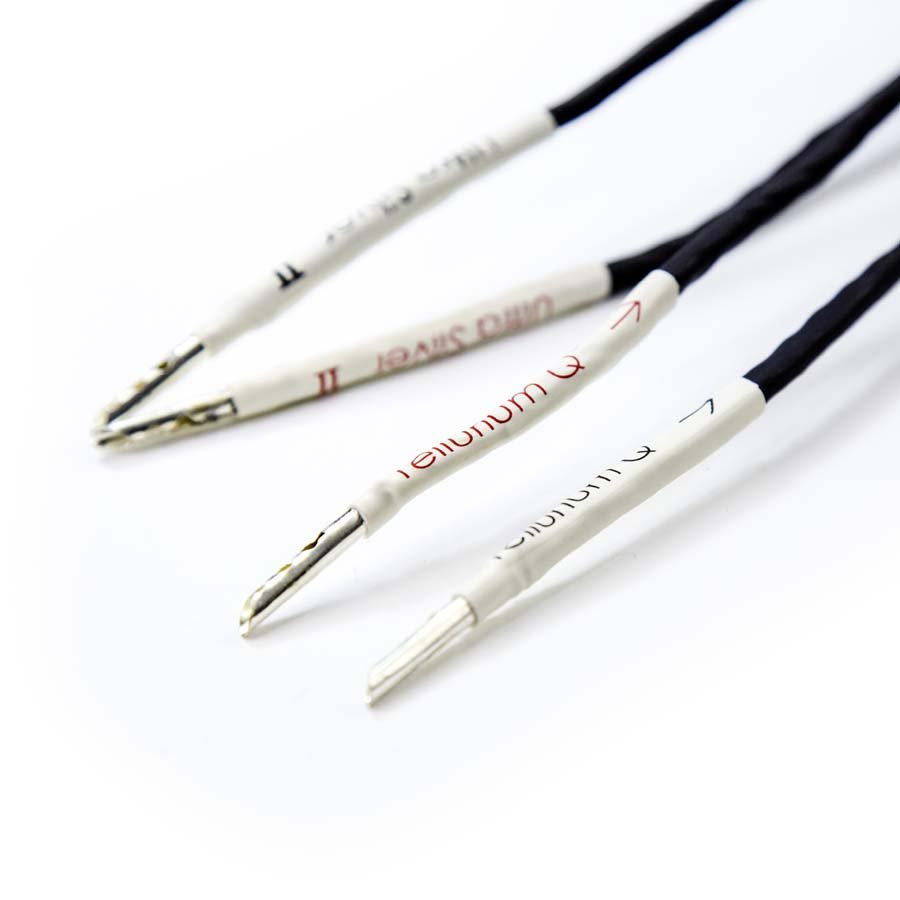
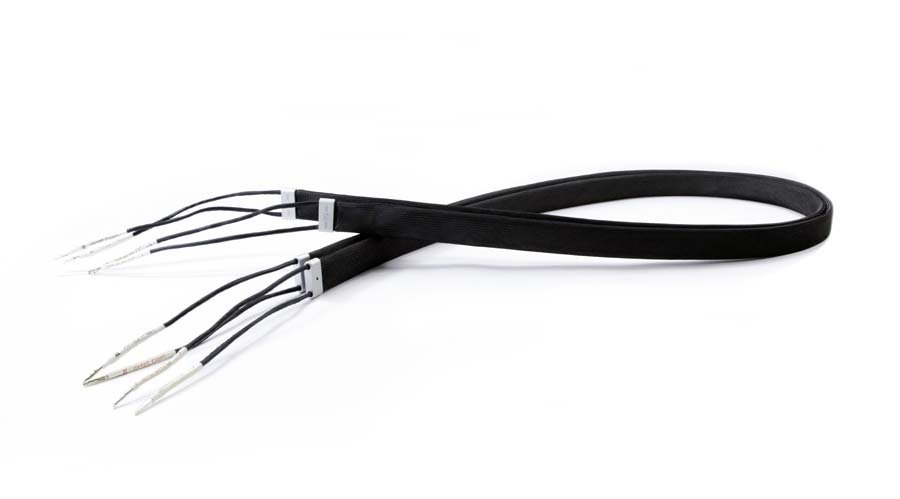
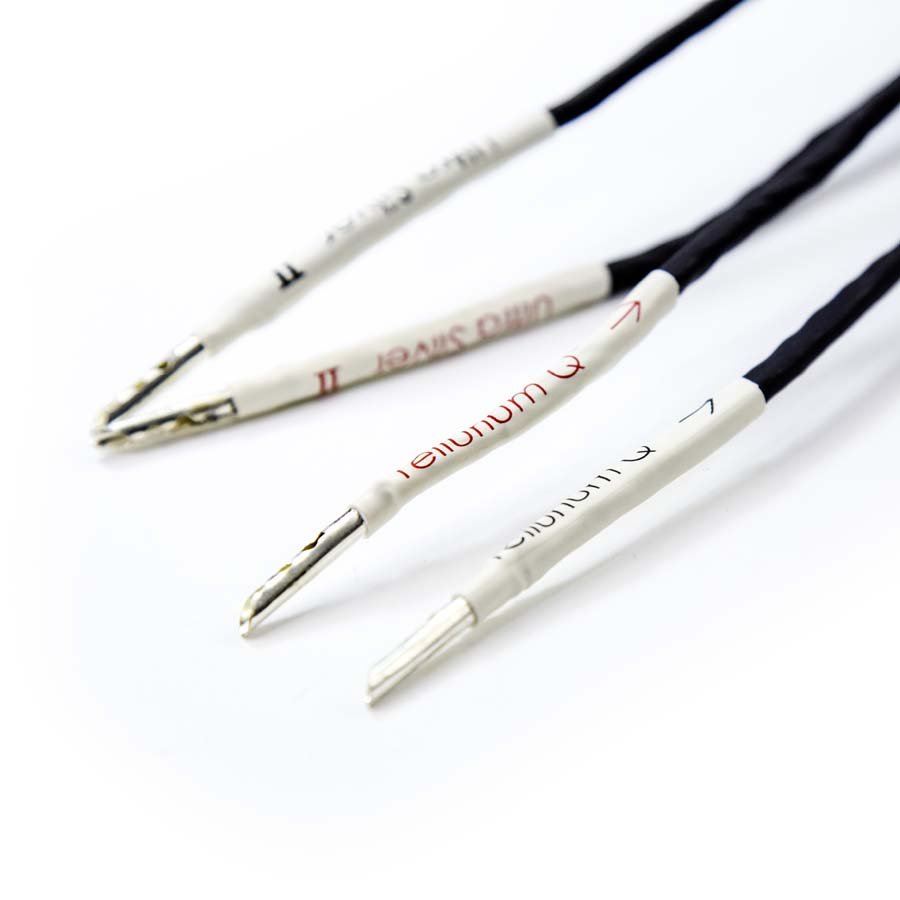
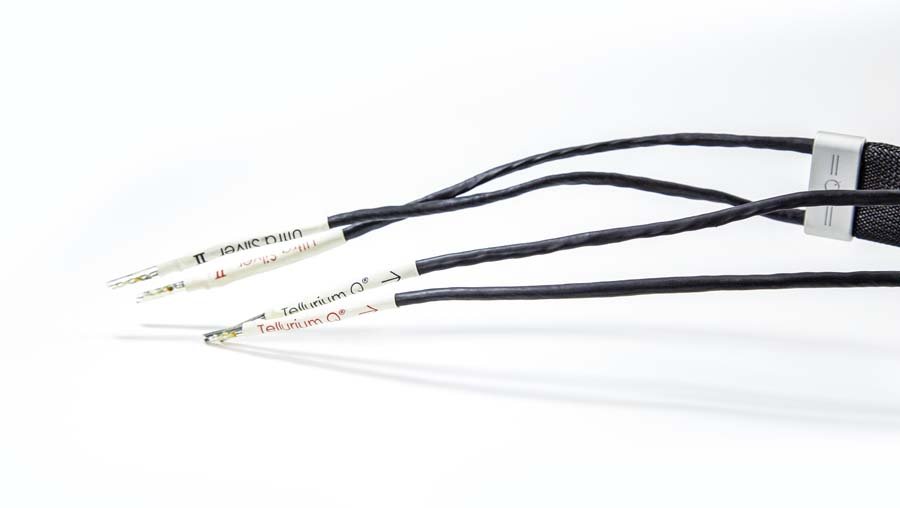
SOUND QUALITY
I guess in summing up the Ultra Silver ll it would be fair to say that there was less of a cable on show. As an ex-BBC sound engineer I want to hear the music or speech in its purity, not coloured at all by cabling or any electronics, and in a way that is perhaps TQ’s downfall; it is so transparent that it can show deficiencies in the rest of the equipment. I was reviewing a new recording from Chasing the Dragon and had listened to part of it with my old cables and then with the TQ, and I could hear slight differences, so needed to start all over again. Even placing the RCA cable in different positions in the chain, such as between tonearm and phono-stage, phono-stage and preamp, or preamp and power amp there were still very slight changes. Don’t ever believe that all cables sound the same, and similarly be very careful which different cables you place at different points in your system. Ironically, it was a 10p bet 15 years ago that got Geoff into making cables in the first place; having been challenged that loudspeaker cables do make a difference, which he didn’t believe. From that point began his adventure into exploring just how conductors, dielectrics, solder, cables, finishes, geometry et al can make a massive difference to the sound.
I did wonder if making cables containing lots of different metals and dielectrics could perhaps make the overall sound complicated or slow, but Geoff’s continual evaluation before being happy with the final product pays off. Indeed, his extensive knowledge means he designs his products initially hearing them in his head. “I listen how it sounds in my head before I put it together, and that starts the prototype process”.
So, did that mean that the sound from the TQ was slow and complicated? No way, it actually gave me more of the music to enjoy, like switching your 1080p TV channel to a 4K film gives you more detail. It allowed me to fully appreciate the KT88 valves in my power amp and the new capacitors in my rebuilt Ferrograph Logic 7. Putting on Elles Springs ‘Reveal’ album from Vertere’s label on my Krell KPS20i CD player made me surprised at just how good this machine is. The music was clean and precise yet still very musical, and a definite improvement on the original Ultra Silver in terms of timing and extension of frequencies. In the past, it was always the bass end that made me slightly less than euphoric with TQ cables, but both the RCA and loudspeaker Mk ll cables had a noticeably tighter, clearer, and extended bass end. For example, in “Anyway” with the double bass’s walking bass line. The sudden end of this track was also very tidy from the TQ – it can sound slightly “cut-off” on other cables.
I have raved before about the Chasing the Dragon ‘Vivaldi in Venice’ album. The musicians are great and the quality of the recording is excellent, so I have often used this when reviewing HiFi equipment as well as just listening for my own pleasure. Having been sent the companion to this album, ‘Vivaldi in London’, recorded at Air Studios on 11th and 12th December 2023, I was going to be in for a real treat. This direct-cut double-LP is also available on two 15ips reel-to-reel tapes, which is what I was lucky enough to have for the review. As I wrote earlier, I had started to listen to the tapes using my resident cables and was very impressed, but switched over mid-way to the new TQ cables. Perhaps not a good idea! There was a definite “airiness” with the new cables (appropriately recorded at Air Studios!) with the music having more space and precision. While with my own cables the sound was as clear and precise and extended as I have got accustomed to hearing, with the Ultra Silver ll it seemed to take off in a different direction which I found highly compelling and rich in analogue musicality that sounded superb, even from my kitchen when I went off to put on the kettle for a cup of coffee! If the music can sound incredibly real even away from the sweet-spot then it must be special. Vivaldi’s Concerto for violin, cello, strings, and harpsichord RV546, performed by Interpreti Veneziani had everything you could need to test out your HiFi components; brilliant string textures, live acoustics, and excellent detail and frequency extension from the harpischord. The harpsichord was precise and positioned perfectly in the soundstage; better than with my resident cabling. I guess the phase distortion reduction would be part of the reason. Often the weakest link in the HiFi setup, cables are still part of the system and it is important that they are equally considered when forming your HiFi components.
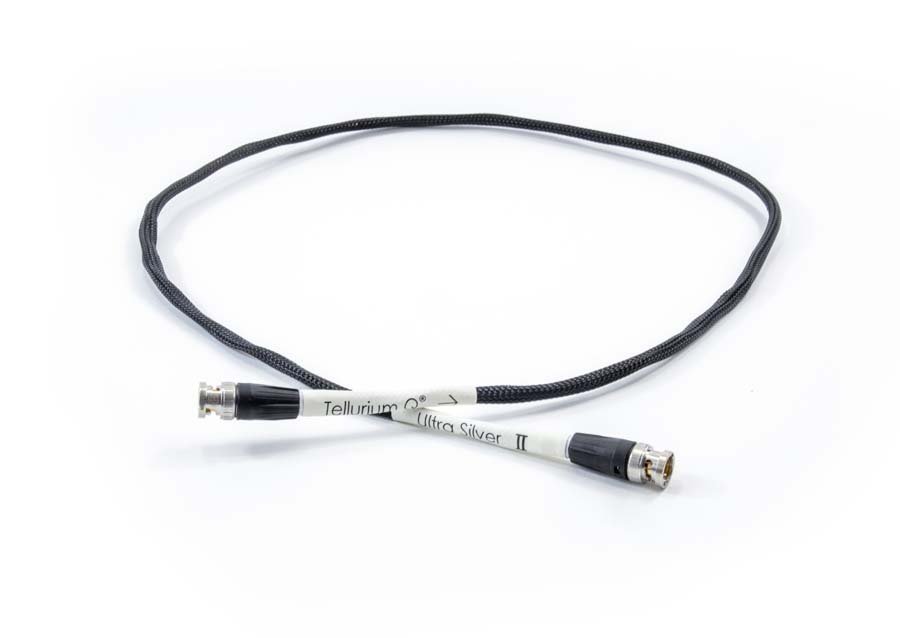
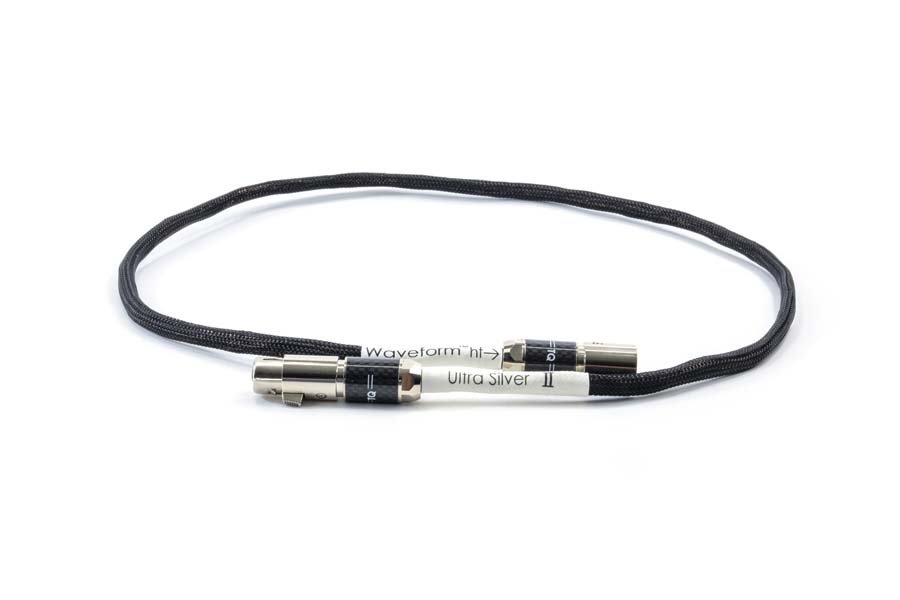
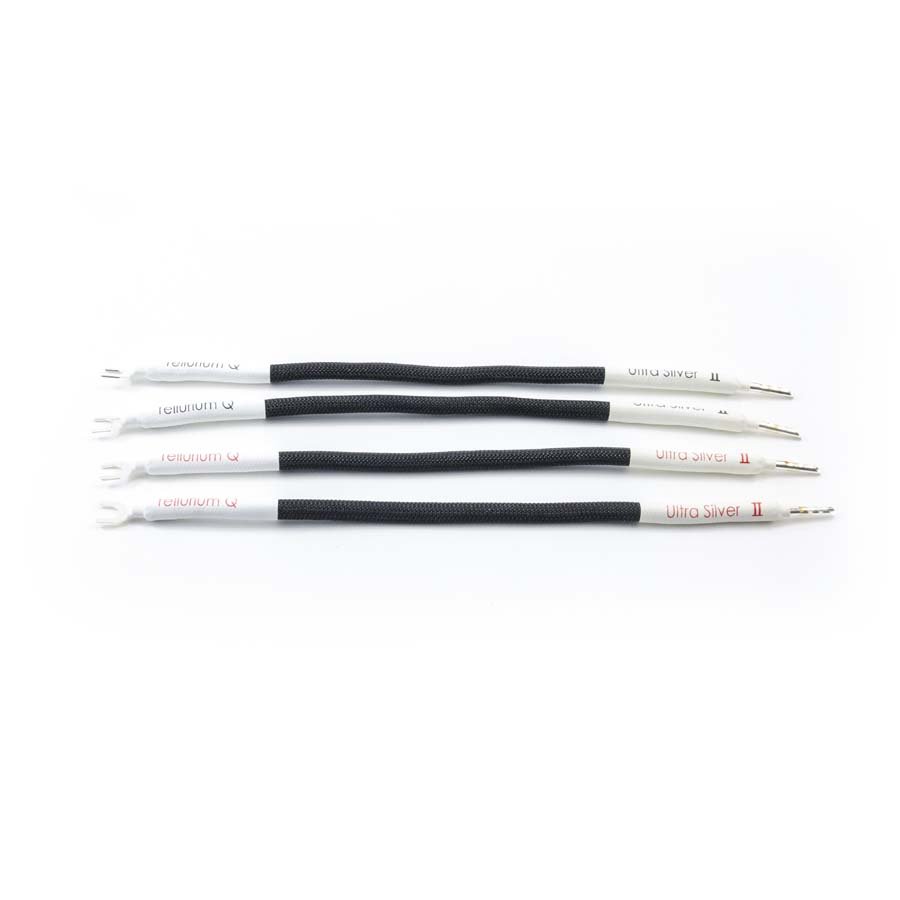
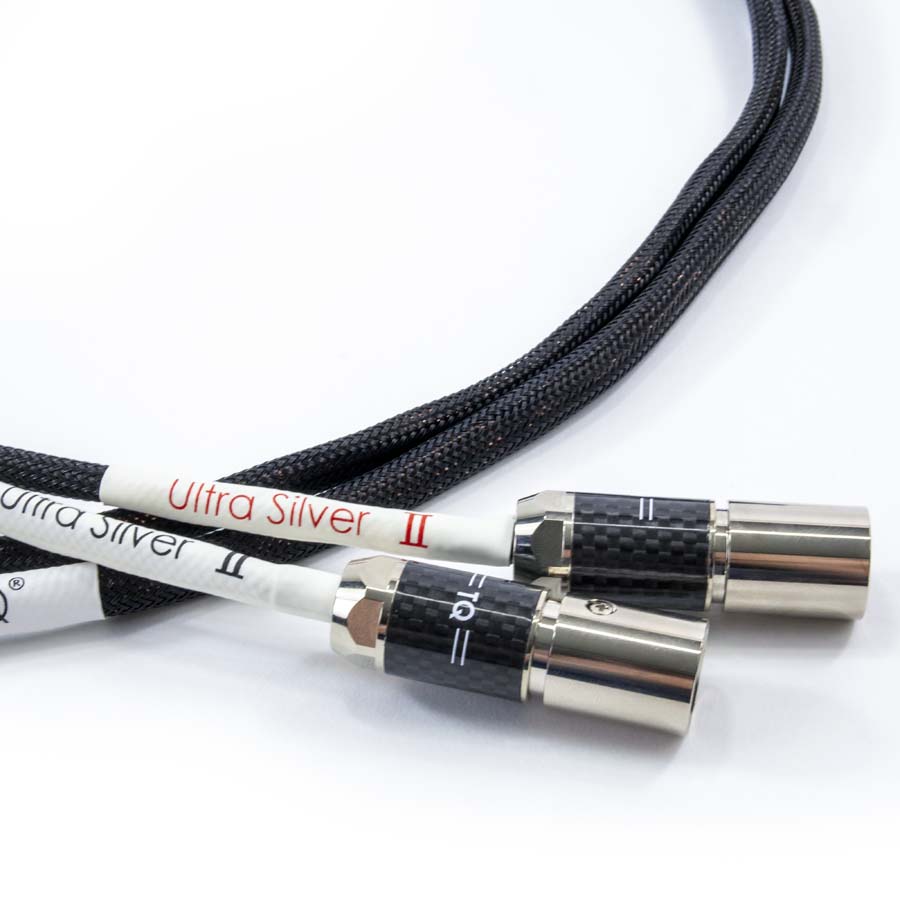
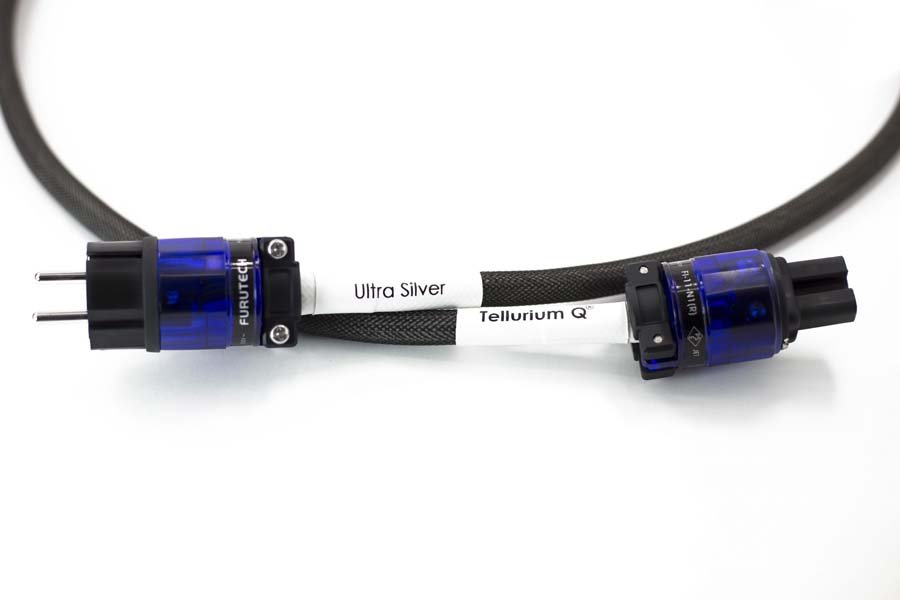
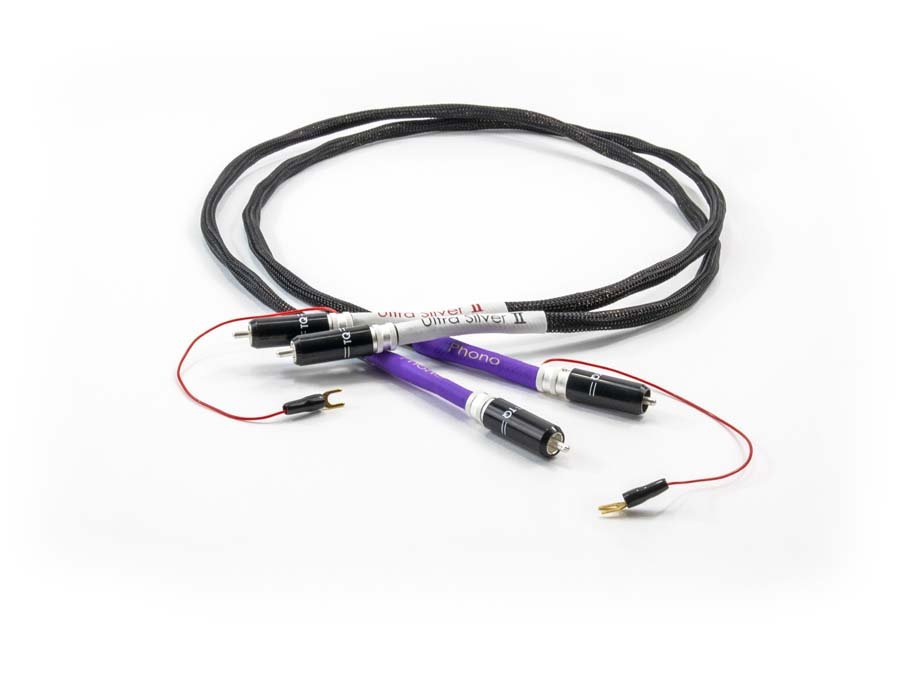
I have always loved Eva Cassidy’s rendition of Sting’s “Fields of Gold”. A warm and cozy voice topped with a clean and precise acoustic guitar. My own cables sound great, but I found the intimacy and musicality from the Ultra Silver ll cables, especially the loudspeaker cable, was greater. The soundstage was very clear. Indeed, various albums I have that have a confusing soundstage just opened up the music a little more clearly; for example “The Battle” from The Gladiator film (The Lyndhurst Orchestra). Each section of the orchestra was clearly placed and the percussion bursts were deeper and cleaner. Top ends from the brass were also noticeably tidier. With phase distortion being dealt with by the cables there was more time to take in the pure music. Led Zeppelin’s “Kashmir” performed this time by Dixie Dregs and Steve Morse can often sound confusing in the upper registers, but here the cymbals were less “tizzy” and bass drums tighter.
Saint Saens Symphony No.3 (London Philharmonic Orchestra, Serge Baudo, EMI) is a classical album that needs to be played in any HiFi evaluation, particularly the “Finale” with the organ playing its heart out, especially low frequencies. The TQ didn’t disappoint with great control and gusto. Everything in the soundstage was very detailed and clear, especially in the 2nd movement when several tunes appear at the same time. The introductory chords from the organ in the finale movement were tight and extended in the bass. The next section left the hairs on my arms standing on end as I took in the beauty of the music. This was gorgeous.
I like live albums and the Moody Blues ‘Caught Live+5’ is well put together with excellent audience atmosphere and a great bass line… complete with the odd bass guitar mistakes. “Nights in White Satin” with Justin Haywoods excellent voice is, however, just not as clear in places as I would like. The songs in sides 1 to 3 of this double album were recorded live at the Royal Albert Hall on 12th December way back in 1969. Hi-hat was very fast and the bass drum clear. The flute just sang beautifully. All the detail from the groove through the cartridge and all the way to my loudspeakers was as controlled and exact as the timing from the very best Swiss watch. That detail was apparent in London Grammar’s “Non Believer” from the album ‘Truth is a Beautiful Thing’. Truth really is a beautiful thing when you are listening to your HiFi; you really do want it to let you know all that is going on. I felt there was too much distortion and the odd sibilance from the music. I decided to play it on another system to see if it was my cartridge or the vinyl. Now on my aged Chartwell BBC LS3/5a and Slee monoblocks the detail from these speakers was more than I had heard in the past, and even that bass extension down to a bottom G (49Hz) on the guitar was clearly audible and took me by surprise…these speakers were only designed for speech and mobile recording vans. The loudspeaker cable seemed to get more detail out of the music, including the distortion and odd vocal “tizz”. These cables are not smooth and forgiving like the Blue series. Whilst very natural, they were incredibly vivid and unexpectedly gave me more out of the loudspeaker than I thought possible. I had the cables only for the first 50 hours of their life and noticed improvement as they “settled in”. I can only assume they’ll get better over the next 50 hours.
QUIBBLES
Being so detailed might show up foibles in the rest of the system, so make sure that your system deserves such a good cable. That said, even using my “cheap” Slee/Technics SL-Q2/Ortofon/LS3/5a set up showed just what is possible from your HiFi. Also, the loudspeaker cable isn’t as bendy as I would like, though this shouldn’t cause any problems unless you live in a shoebox.
CONCLUSION
Having listened to a number of TQ cables over the years I have got accustomed to what to look out for in evaluating them. With their focus on reducing phase distortion, I needed to hear just how much extra information could be etched out of the music and yet at the same time for it be highly musical, and I wasn’t to be disappointed here. The Ultra Silver ll is a highly commendable product and I can see how they justify it as being at the top of their performance profile. These are certainly a musical step-up from my Ultra Black ll, and worthy of their place in a mid or top-end HiFi setup. Unlike a lot of cables, you probably won’t even notice it’s there.
AT A GLANCE
Build Quality:
Tellurium Q cables are always well put together and look professional, especially the “ribbon” speaker cables
Sound Quality:
Very clean and neutral performance adding nothing to the original sound
Value For Money:
These cables are not cheap, but priced appropriately for higher-end HiFi that will do them justice.
We Loved:
Natural and neutral performance
Excellent 3D soundstage
Excellent timing and detail
Free from phase distortion
We didn’t Love so much:
The Ultra Silver ll loudspeaker cable is less pliable around tight corners than the Mk l version
Elevator Pitch Review: It is always a pleasure to be sent cables from Tellurium Q to evaluate, especially “revised” versions of a favourite, and it is exactly 10 years since Hifipig reviewed the original Ultra Silver loudspeaker cable. With both the Ultra Silver l and Ultra Silver ll in my hands, I had a chance to see if there was a difference between old and new, and I wasn’t disappointed. There is an improvement not only in musicality but also tightness and precision, plus a better performance at lower frequencies. I’m already looking forward to the Mk lll!
Price:
Ultra Silver ll loudspeaker cable £583.75/m
Ultra Silver ll RCA interconnect £890.85/m (pair)

Janine Elliot
SYSTEM 1: Pre-Audio GL-1102N/Audio Technica AT33sa (turntable/cartridge); Manley Steelhead (phono stage); Krell KPS20i (CD); Ferrograph Logic7 (reel to reel); Astell and Kern SE180/iFi xDSD (DAP/streamer); Music First Audio Baby Reference pre-amp, Synthesis Roma 98DC (amplification); Esprit and Townshend cables, Coppice Audio stand and Townshend rack.
SYSTEM 2: Slee Proteus poweramp, Magestic preamp; Technics SL-Q2 turntable and Chartwell LS3/5a speakers












































